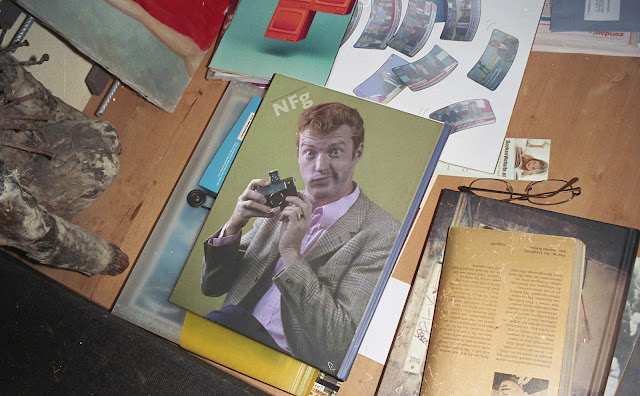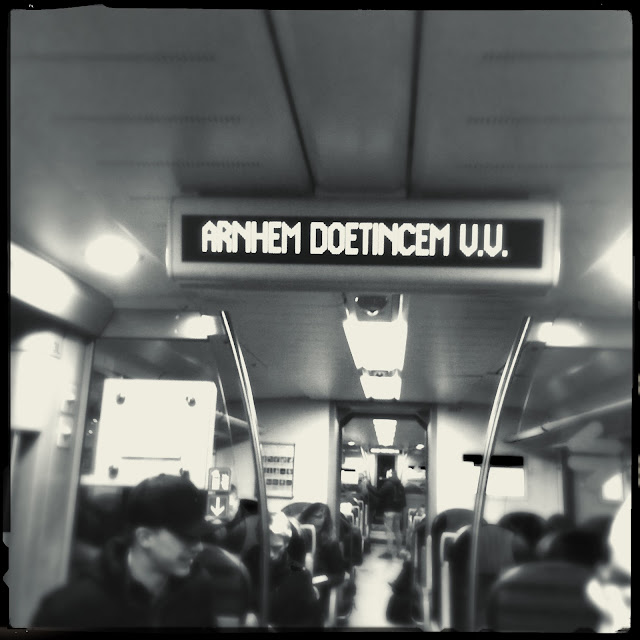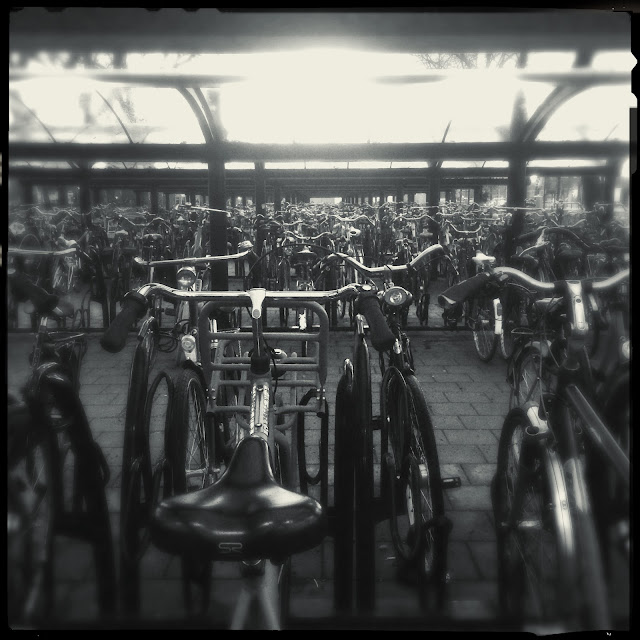AgfaPhoto Vista Plus 400 is wel zo’n beetje de gemakkelijkst verkrijgbare 35-mm film momenteel. Gewoon te vinden bij het Kruidvat en dat soort winkels voor een normale prijs. En de film is uiteindelijk prima, zie foto’s onder en boven. Camera: Olympus AZ-330 Superzoom.
15 december 2017
All Advertisements in Vain (1965)
© Bildarchiv Preußischer Kulturbesitz/ Günter Zint
GHDI:
During the 1960s, young people experimented with new types of lifestyles and experiences. In doing so, however, they encountered consistent opposition and attacks from members of the older generation and representatives of the state. These self-appointed champions of traditional conceptions of order polemicized against Beat music, “bums,” long hair on boys, and pants and short skirts on girls. This ironic photograph features a long-haired young man sitting in front of a traditional barber shop. Photo by Günter Zint.
GHDI:
During the 1960s, young people experimented with new types of lifestyles and experiences. In doing so, however, they encountered consistent opposition and attacks from members of the older generation and representatives of the state. These self-appointed champions of traditional conceptions of order polemicized against Beat music, “bums,” long hair on boys, and pants and short skirts on girls. This ironic photograph features a long-haired young man sitting in front of a traditional barber shop. Photo by Günter Zint.
The "Kino International" and the Hotel Berolina (background) on Karl-Marx-Alle, East Berlin (1964)
© Bildarchiv Preußischer Kulturbesitz / Max Ittenbach
GHDI:
Starting in 1952, the section of East Berlin’s Karl-Marx-Allee between Strausberger Platz and Frankfurter Tor was transformed into a grand, representative avenue in the style of Socialist Classicism; it was modeled on the Stalinist architecture of the Soviet Union. Beginning in the mid-1950s, two factors converged – Soviet-sponsored de-Stalinization and new economic imperatives – to force a change from manual to industrial building in the GDR, and this eventually allowed for the cautious realization of a certain brand of architectural modernism that had been frowned upon up to that point. Starting in 1959, the section of Karl-Marx-Allee that runs east from Alexanderplatz to Strausberger Platz was lined with imposing buildings made from prefabricated slabs. Work proceeded according to a plan submitted by Edmund Collein and Werner Dutschke. The architecture of Karl-Marx-Alle was also shaped in large part by Josef Kaiser, who designed “Kino International” [“Cinema International”] and the 13-story “Hotel Berolina,” both of which can be seen below. Photo by Max Ittenbach.
GHDI:
Starting in 1952, the section of East Berlin’s Karl-Marx-Allee between Strausberger Platz and Frankfurter Tor was transformed into a grand, representative avenue in the style of Socialist Classicism; it was modeled on the Stalinist architecture of the Soviet Union. Beginning in the mid-1950s, two factors converged – Soviet-sponsored de-Stalinization and new economic imperatives – to force a change from manual to industrial building in the GDR, and this eventually allowed for the cautious realization of a certain brand of architectural modernism that had been frowned upon up to that point. Starting in 1959, the section of Karl-Marx-Allee that runs east from Alexanderplatz to Strausberger Platz was lined with imposing buildings made from prefabricated slabs. Work proceeded according to a plan submitted by Edmund Collein and Werner Dutschke. The architecture of Karl-Marx-Alle was also shaped in large part by Josef Kaiser, who designed “Kino International” [“Cinema International”] and the 13-story “Hotel Berolina,” both of which can be seen below. Photo by Max Ittenbach.
Secretary with a New Typewriter (1961)
© Bildarchiv Preußischer Kulturbesitz
GHDI:
Secretary with a New Typewriter (1961)
The development of a service economy (and the accompanying erosion of the industrial sector) began in the 1960s, but only fully asserted itself from the 1970s onward. Office technology was long dominated by innovative electronic typewriters – this is, at least until they were gradually replaced by even more efficient computers. This photo shows a pert secretary with a new IBM typeball typewriter. Photographer unknown.
About GHDI:
German History in Documents and Images (GHDI) is a comprehensive collection of original historical materials documenting German history from the beginning of the early modern period to the present. The project comprises ten sections, each of which addresses a discrete period in Germany's history. Each section has been compiled by one or two leading scholars and includes:
GHDI:
Secretary with a New Typewriter (1961)
The development of a service economy (and the accompanying erosion of the industrial sector) began in the 1960s, but only fully asserted itself from the 1970s onward. Office technology was long dominated by innovative electronic typewriters – this is, at least until they were gradually replaced by even more efficient computers. This photo shows a pert secretary with a new IBM typeball typewriter. Photographer unknown.
About GHDI:
German History in Documents and Images (GHDI) is a comprehensive collection of original historical materials documenting German history from the beginning of the early modern period to the present. The project comprises ten sections, each of which addresses a discrete period in Germany's history. Each section has been compiled by one or two leading scholars and includes:
- an introduction to key developments in Germany's social, political, and cultural history during the period;
- a selection of primary source documents (in German and English) originating from the period;
- a selection of images originating from or relating to the period;
- a selection of relevant maps.
Abonneren op:
Reacties (Atom)













